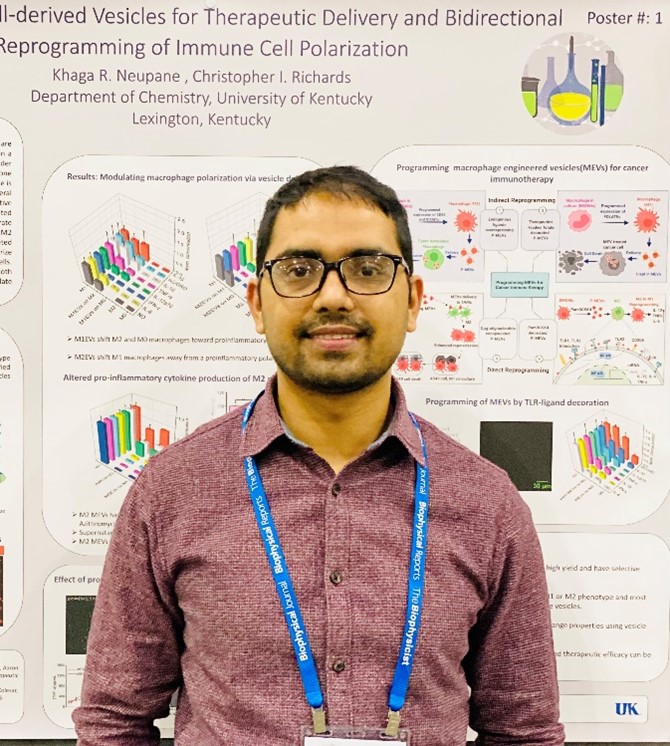Abstract: Development of a new kind of drug delivery system (DDS) that could efficiently deliver therapeutics to the cell of interest would allow us to accomplish cell-specific drug delivery while eliminating systemic toxicity. Although nanocarriers including endogenously released extracellular vesicles (EEVs), liposomes, and small molecules seem to be promising drug delivery systems, biological challenges persist for their use in clinical applications. Here, we demonstrate nanovesicles engineered by fragmenting cellular membranes can be exploited as versatile DDSs for therapeutics delivery as well as immunomodulatory functions. Cell-engineered vesicles were produced by cavitating cells using nitrogen gas at high pressure followed by serial centrifugation. Cell-engineered vesicles (CEVs) are smaller in size, can be generated in high yields, easily loaded with both lipophilic as well as hydrophilic cargo, and exhibit cell-targeting specificity both in vitro as well as in in vivo.
Cell-engineered vesicles generated from immune cells offer additional advantages as immunomodulatory therapeutic agents. Herein, we demonstrate that macrophage-engineered vesicles (MEVs) generated from macrophages, immune effector cells, can modulate the physiological states of immune cells including macrophages and microglia. While MEVs generated from anti-inflammatory (M2) macrophages re-program neuro-toxic pro-inflammatory (M1) macrophages towards M2-like phenotype, MEVs generated from M1 macrophages re-polarize M2 macrophages towards an anti-tumor M1-like phenotype. In addition, in vitro and in vivo delivery of cargo is facilitated by the ability of these vesicles to selectively target the same cell type from which they originated.
Programming cell-engineered nanovesicles through the targeted over-expression of specific membrane-bound ligands transforms them into a more potent immunomodulatory as well as therapeutic delivery platform. We tailored membrane-derived nanovesicles to have unique immunomodulatory features, including the potential to regulate immune cell polarization in both directions. These programmable nanovesicles adorned with certain membrane-bound ligands are capable of targeting particular cell types. Using programmed nanovesicles produced from macrophages enhances immune cell reprogramming to both proinflammatory and anti-inflammatory cells. Additionally, the incorporation of cancer cell-targeting moieties into the vesicle membrane enhanced the transport and absorption of therapeutically loaded nanovesicles, hence increasing their effectiveness.

